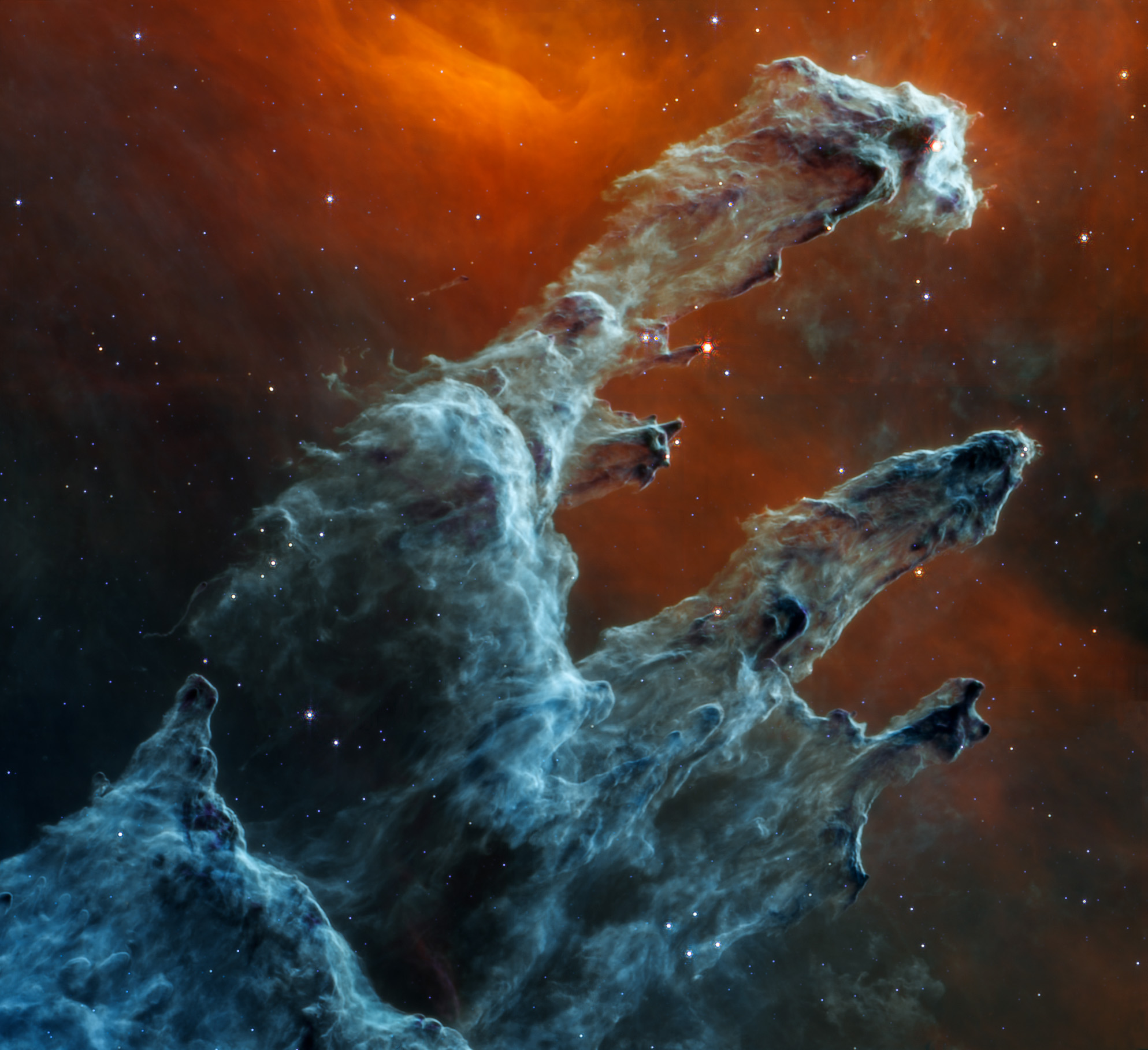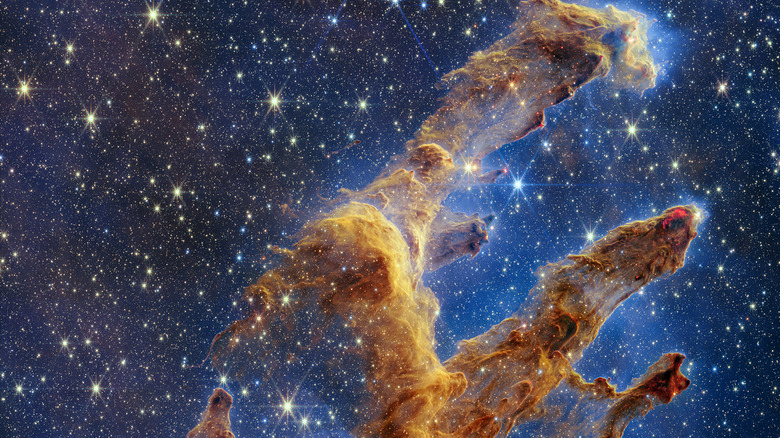James Webb Captures Never-Before-Seen View Of The Pillars Of Creation
James Webb has captured a new image of the Pillars of Creation, giving us an even more detailed look at the gas structures that make up the iconic cosmic entity. In previous captures of the Pillars, we've been able to clearly see the dust clouds and structures that surround the object within the Eagle Nebula.
However, this new image gives us an even more chilling look at those important structures, especially when compared to older captures of the Pillars of Creation.
The new image was captured using Webb's Mid-Infrared Instrument. And, because most stars don't emit much mid-infrared light, we're able to get a better view of the dust structures that make up the Pillars of Creation. The new view is oddly chilling, more resembling ghastly figures coming out of the dust than the Pillars we've come to know and love since Hubble's first capture, and even since Webb's last capture.
Further, this image gives us an even better view of just how massive the star-forming dusty Pillars of Creation are. In fact, NASA outlines in a report on the new image that the topmost pillar is larger than the size of our entire solar system. It's insane to think that something like this might be that big, but when you think about the thousands upon thousands of stars formed within it makes sense.

James Webb has given us some exceptionally great views of the Pillars of Creation, and the early universe. But the prettiness of the images isn't what is most important here. Webb's first images were beautiful, but they also gave us more data than ever to look at when it comes to those cosmic entities.
Of course, digging into that data will take time, which is why we haven't learned a lot from Webb or its images of the Pillars of Creation just yet. But, as more astronomers get access to the important work that James Webb is doing, we'll hopefully start to decipher some of the mysteries of our universe, and perhaps we'll even learn more about the Pillars of Creation and how it forms the stars that dot its long, dusty tendrils.
More coverage: James Webb prepares for observation of Saturn after glitch fix.
